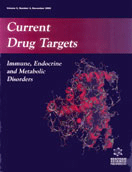Abstract
In the course of pregnancy amnion cells produce a number of factors which include cytokines and prostaglandins (PGs) produced in response to autocrine, paracrine and endocrine signals. Recent studies performed by several researchers contributed to elucidate the mechanism through which amnion tissue is involved in the triggering of physiological labor. However, there are other possible functions to be ascribed to amniotic cells, depending on the high number of factors that they produce as well as on the receptors that enable them to act in turn as target. For instance, it has been demonstrated that amnion cells are able to produce lecithin upon the regulation of several factors, such as glucocorticoids and epidermal growth factor, a finding that suggests a protective role of the tissue on fetal pulmonary function. As regards to triggering the uterine contractions, it is accepted that prostaglandin release by amnion cells represents a key event. It is under the control of hormones, growth factors, cytokines and probably PGs themselves. A striking analogy has been found between the mechanism of inflammation and the onset of myometrial activity in labor. In this context, it has been shown that for-Met-Leu-Phe (fMLP), the prototype of a series of formylated peptides traditionally considered chemotactic agents, is also involved in the regulation of amniotic PG release. The similitude between labor and inflammatory response is enforced by the antiprostaglandin action of some classes of antibiotics observed in amnion tissue, that enable them as effective tools against preterm labor, both in the absence and in the presence of infection. As for the mechanisms responsible for the regulation of PG synthesis, some agents act by influencing protein synthesis, while others exert their effects through the production of intracellular second messengers, mainly represented by phosphatidyl-inositol-4-5 bisphosphate and cyclic AMP. The mechanism whereby second messengers induce PG release is not clear, and a crosstalk between the two transduction pathways could be hypothesized. This interaction has extensively been analysed in “WISH” cells, a human amnion-derived cell line, which represent a model for the in vitro study of amnion functions. In the present review, we intend to report the results of the studies regarding the mechanisms through which the control of the above mentioned functions is executed.
Keywords: wish cells, amnion, labor, cytokines, prostaglandins, estrogens, oxytocin, cyclic amp
 13
13


















